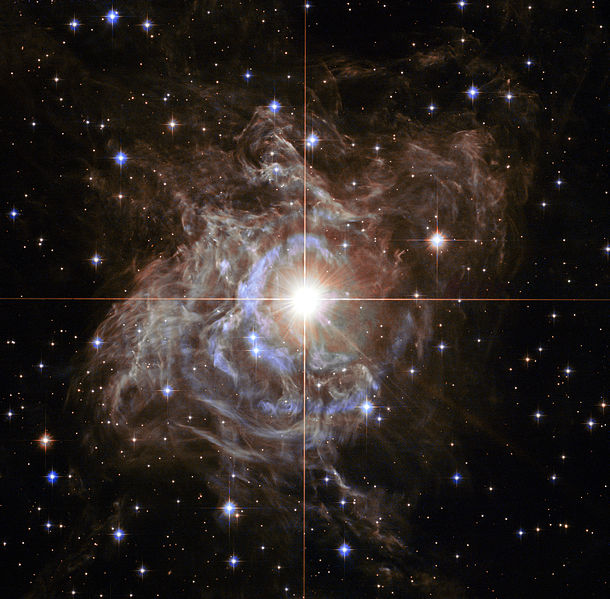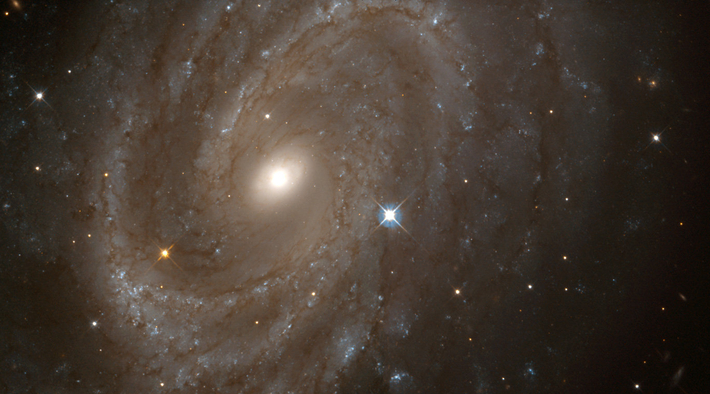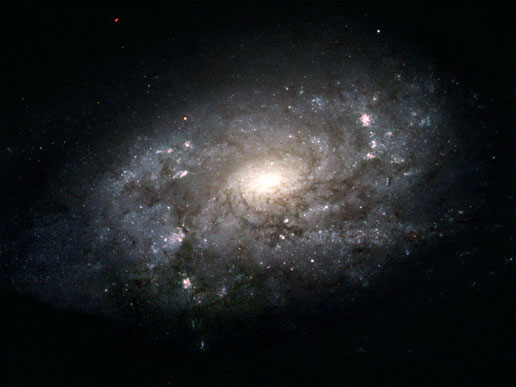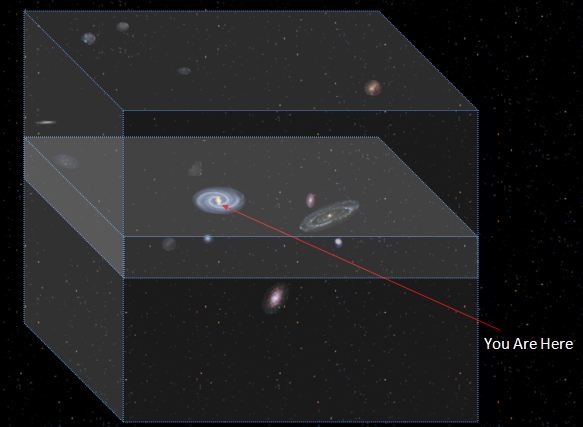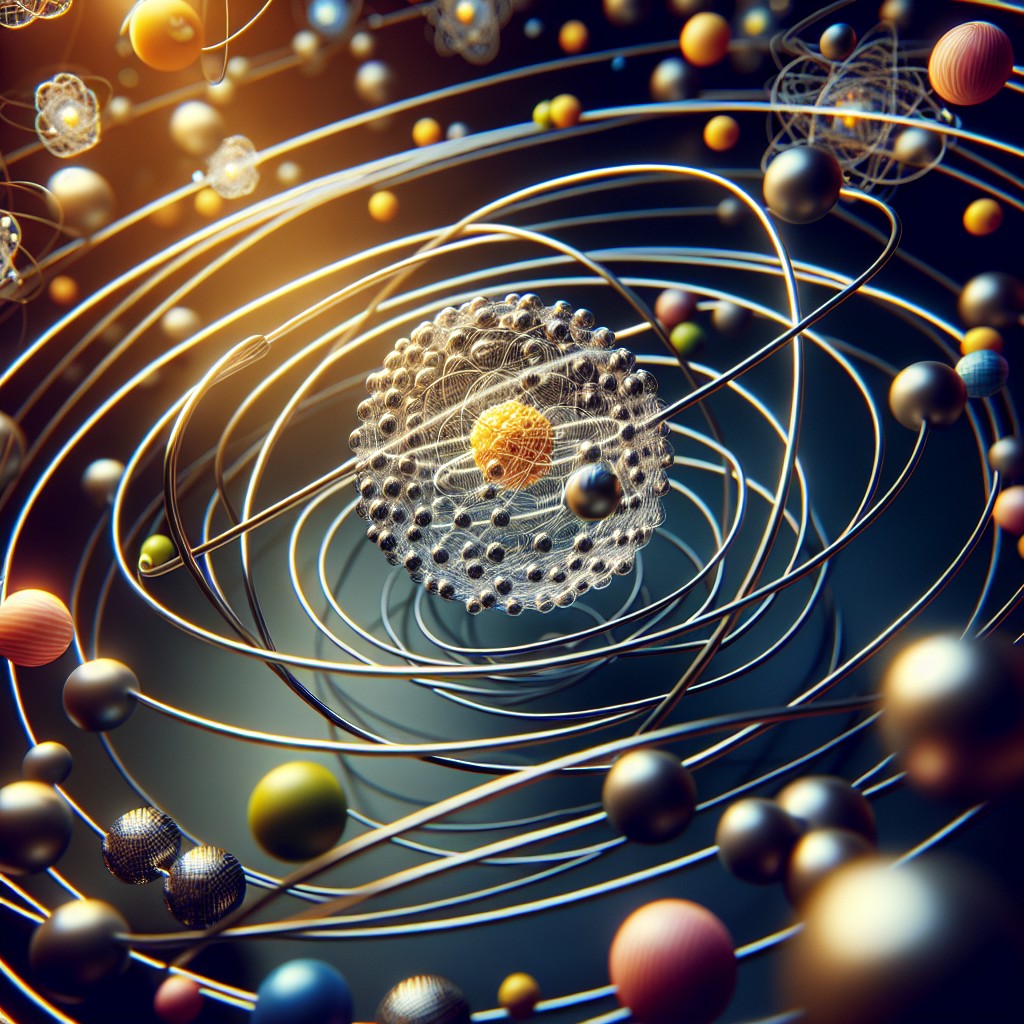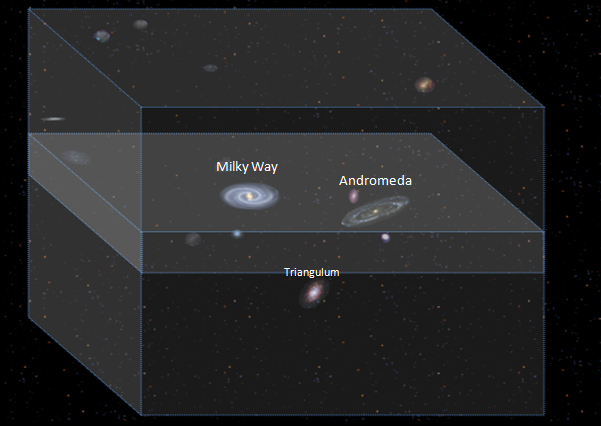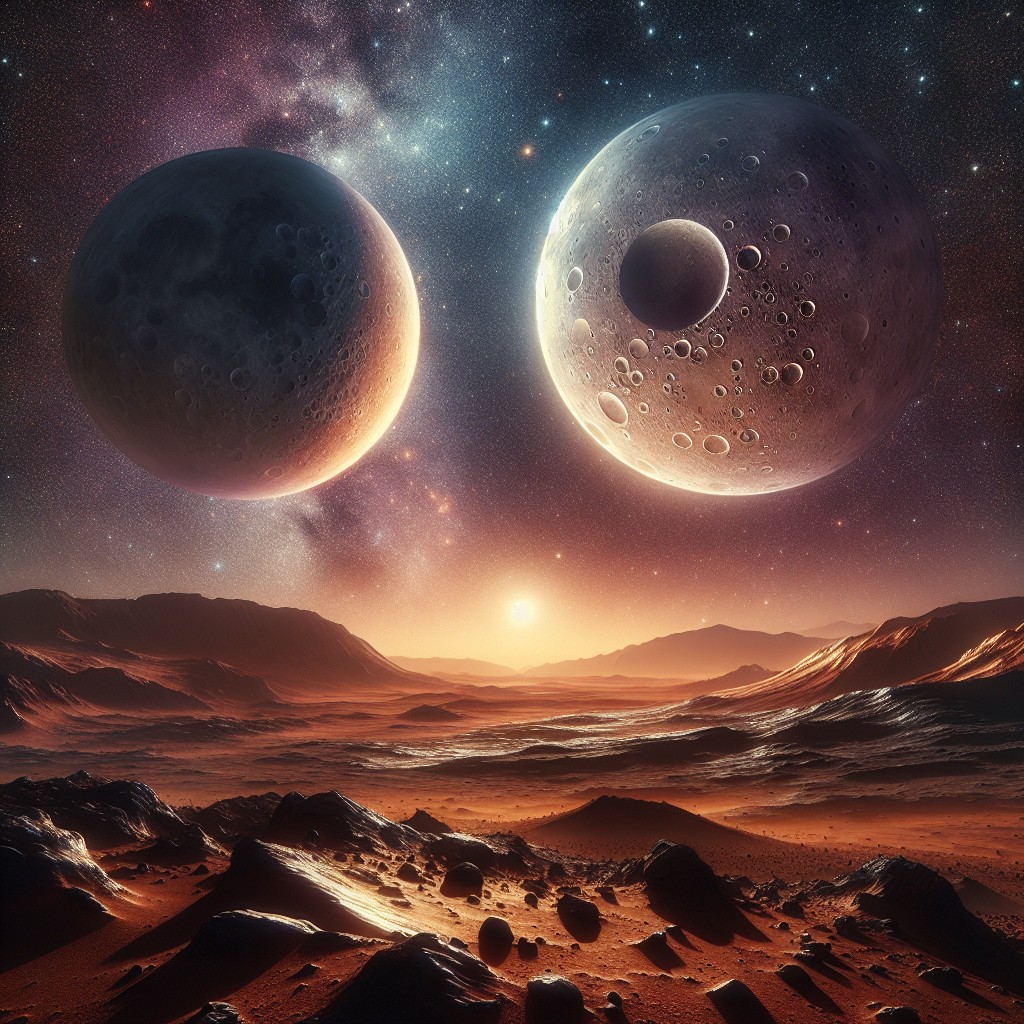What are Cepheid Variables?
Why are they useful?
Measuring the Milky Way
Hubble’s work with Cepheid Variables
Existence of other galaxies
The Expanding Universe
Dark Energy
Dating the Universe
Certain stars called Cepheid Variables have changes to their magnitude which increase and decrease at regular intervals (or periods).
This image is from NASA’s Hubble telescope showing RS Puppis, as Cepheid Variable with a period of 40 days and a change in magnitude of around 5 factors.
In 1912 American astronomer, Henrietta Leavitt, came up with a way to use the characteristics of Cepheid Variables to calculate their distance.
The periods of changes in magnitude from Cepheid Variables vary from star to star but, if the period is recorded, the variation in magnitude can be used to calculate the distance. Some of these Cepheid Variables were close enough to have their distance measured using the parallax method (see below). Henrietta Leavitt noticed a relationship between the absolute magnitude and the star’s period allowing modern astronomers to accurately calculate the distances of stars far beyond the parallax method.
It is this technique that has allowed modern astronomers to calculate the size and shape of our galaxies, distant galaxies and even help calculate the age of our universe.
The bright blue star is one of 50 cepheid variables used to measure the distance of galaxy NGC 4603 which they inhabit. It is one of the furthest galaxies measured using the method and is believed to reside 107,000,000 light years away in the constellation Centaurus.

Using the parallax method even with today’s technology it is not possible top measure distances as vast as our Milky Way galaxy. In 1989 the European Space Agency (ESA) launched their Hipparcos satellite (named after the ancient Greek astronomer called Hipparchus who classified the magnitude of the visible stars in order to measure their distance from Earth). Its mission was to map our galaxy using the parallax method and despite its technological brilliance it still could only measure 100 parsecs. In 2002 Japan completed its VERA satellite array which consisted of four stations across the distance of 2,300 km it is still only able to measure a distance of 6,000 parsecs.
It was only due to Henrietta Leavitt’s method of using cepheid variables that astronomers could measure the 40,000 parsecs (100,000 light-year) expanse of our Milky Way.
American Physicist, Harlow Shapely, used a Leavitt’s method on another type of variable star known as RR Lyrae Variable Stars. RR Lyrae Variables lay in the globular clusters surrounding the galaxy and it was due to these that he could accurately determine the size of the Milky Way. He determined that we were closer to the edge of the galaxy, and not the centre as previously thought, and that it is approximately 40,000 parsecs (100,000 light-years) in diameter.
The Milky Way Galaxy
Hubble’s work with Cepheid Variables
American Edwin Hubble is probably one of the world’s most famous astronomers, so famous in fact that in 1990 the most powerful telescope ever made was named after him. Hubble began work at the Mount Wilson Observatory in California in 1919 studying cepheid variable stars and it was through this study that he made some of mankind’s greatest discoveries about the universe. He showed that the universe was made up of many galaxies (not just the Milky Way), that the universe was expanding providing evidence of the big bang theory and that this expansion was increasing which has led to the theory of dark energy.
In 1922-1923 Edwin Hubble, made observations of cepheid variables in several spiral clusters of stars. He concluded from the measurements that these stars and clusters lay far beyond our Milky Way Galaxy. He concluded, against much opposition, that these star clusters were in fact other galaxies entirely and he announced his findings in 1924 in a national paper.
Illustration of our local galactic group – credit Earth Site.
Hubble’s findings were ignored or ridiculed initially by the majority of the scientific community (this included Harlow Shapely, who first accurately measured the Milky Way some years before). It wasn’t long before the world realised Hubble was correct and the model of our solar system would change forever. This wouldn’t be the only great revelation Hubble would bestow to the world from his work with cepheid variables.
In 1929 Hubble began using a technique of measuring the redshift (the Doppler affect on the red frequency of light when the source is moving closer or further away) of cepheid variables from many galaxies. He discovered that the galaxies were actually moving away from us and each other. This was evidence that the universe was expanding which led to the ‘Steady State Theory’ and the ‘Big Bang Theory’.

Hubble’s measurements of cepheid variables not only showed that universe was expanding but that the rate of expansion between the galaxies was increasing.
It is generally accepted by most scientists that the universe began as an infinitely hot and dense point which ‘exploded’ producing the ever-expanding universe (known as the big bang theory).
If an explosion was produced on Earth the energy from the reaction would be converted into sound, heat and kinetic energy. The kinetic energy propels matter in all directions until external forces, such as air pressure, slows the matter to a stop.
In space an explosion would not produce sound, as there are no carrier particles for the wave, and with fewer external factors the matter would be propelled for a greater distance. Even without any external factors acting against the propulsion of matter its rate of expansion should stay the same. So Hubble’s discovery that the rate of expansion is actually increasing implies that more energy is being applied.
Currently there is no satisfactory explanation for the source of this additional energy and so it has been dubbed ‘Dark Energy’.
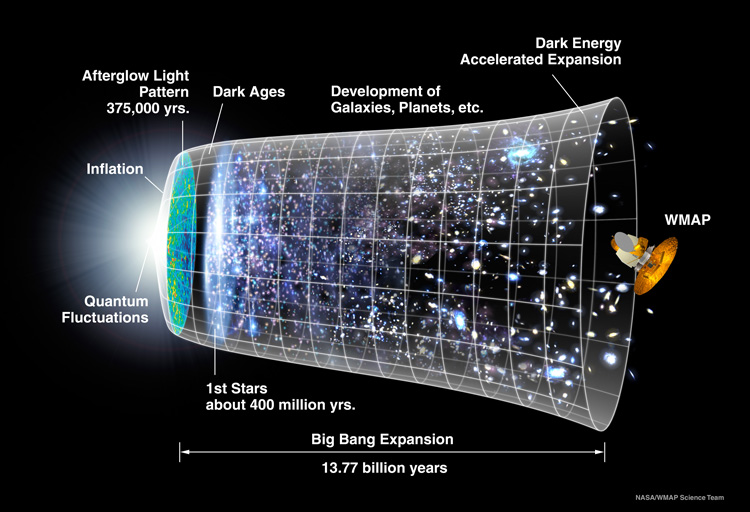
From Hubble’s work with Cepheid variables he could calculate the rate of expansion of the universe, known as Hubble’s constant. Theoretically reversing the expansion at the same rate would bring us to a initial point of infinite density and heat (the singularity). This allows us to calculate the time it would have taken to get to the present.
